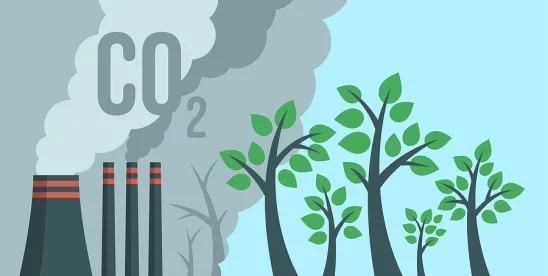On May 14, 2024, the U.S. Environmental Protection Agency (EPA) published the final Greenhouse Gas Reporting Rule requirements for petroleum and natural gas systems under 40 C.F.R. Part 98, Subpart W in the Federal Register. The changes to this rule resulted from passing the Inflation Reduction Act of 2022 (IRA) which required EPA to develop standards to collect payment on methane from facilities that exceed specific thresholds. The new rule expands the reporting requirement to apply to additional facilities, adds and improves methods for calculating and detecting emissions, and finalizes confidentiality determinations for certain data elements. The final rule applies to a wide range of oil and gas facilities operated by the petroleum production, gas transmission, and utility industries. It will impose significant administrative and recordkeeping costs on those industries, as well as requiring them to pay fees for reported methane emissions.
Background and Affected Facilities
The IRA amended the Clean Air Act to include a mandate that EPA establish standards for reporting and calculating payments based on “empirical data […], accurately reflect the total methane emissions and waste emissions from the applicable facilities, and allow owners and operators of applicable facilities to submit empirical emissions data.” 42 U.S.C. § 7436(h). Owners and operators of facilities that report over 25,000 metric tons of carbon dioxide equivalent will be required to collect greenhouse gas data; calculate greenhouse gas emissions; and follow the specified procedures for quality assurance, missing data, recordkeeping, and reporting. Based on that data, owners and operators must also pay a fee for methane emissions based on specified thresholds. 42 U.S.C. § 7436(c). The affected facilities include petroleum and natural gas production, onshore natural gas processing, onshore natural gas transmission compression, underground natural gas storage, liquified natural gas storage, liquified natural gas import and export equipment, onshore petroleum and natural gas gathering and boosting, and onshore natural gas transmission pipelines. 42 U.S.C. § 7436(d). EPA’s comments to the final rule discuss the use of satellite and other “advanced technologies” to monitor emissions and, according to their Fact Sheet for the final rule, EPA may seek additional input on the use of advanced technologies to facilitate monitoring and measuring methane emissions.
Reporting Obligations
The rule is notable given the significant number and type of sources required to report. Under the rule, covered facilities must report CO2, CH4, and N2O emissions from essentially all oil and gas equipment and components, examples of which include natural gas pneumatic device venting, flare stack emissions, reciprocating compressor venting, dehydrator vents, acid gas removal vents, enhanced oil recovery hydrocarbon liquids dissolved CO2, blowdown vent stacks, and equipment leaks. 40 C.F.R. § 98.232. The new rule also requires reporting for emissions from “other large release events” to “capture maintenance or abnormal emission events that are not fully accounted for using existing methods in subpart W” such as pipeline venting or methane released at a storage facility due to an overpressure situation that results in a release of 100 kilograms or more of methane in an hour. Greenhouse Gas Reporting Rule: Revisions and Confidentiality Determinations for Petroleum and Natural Gas Systems, 89 Fed. Reg. 42,062, 42,078 (May 14, 2024) (to be codified at 40 C.F.R. Part 98). The new rule also modifies the formulas that facilities use to calculate emissions, requiring existing reporting methodologies to be updated.
The final rule also mandates public reporting of these emissions. EPA allows only certain data elements to be considered for confidential treatment. Data elements eligible for confidential treatment include the quantity of natural gas received for processing in the calendar year, the quantity of processed gas leaving the gas processing plant in the calendar year, and the quantity of residue gas leaving that has been processed by the facility.
Finally, the timing of the final rule gives facilities only limited time to prepare for compliance. The rule will take effect on January 1, 2025, except for facilities specifically exempted under 40 C.F.R. §§ 98.233, 98.236, and 98.238, and for which the final rule’s requirements become effective July 15, 2024. The expressed purpose for this short effective date is to allow certain facilities to submit empirical emissions data while using the revised formulas and reporting methodology required by the new rule. While the rule has not yet been challenged, we anticipate that it may be, and any challenge may draw upon recent decisions related to Chevron’s deference and the Major Questions Doctrine.





 />i
/>i

